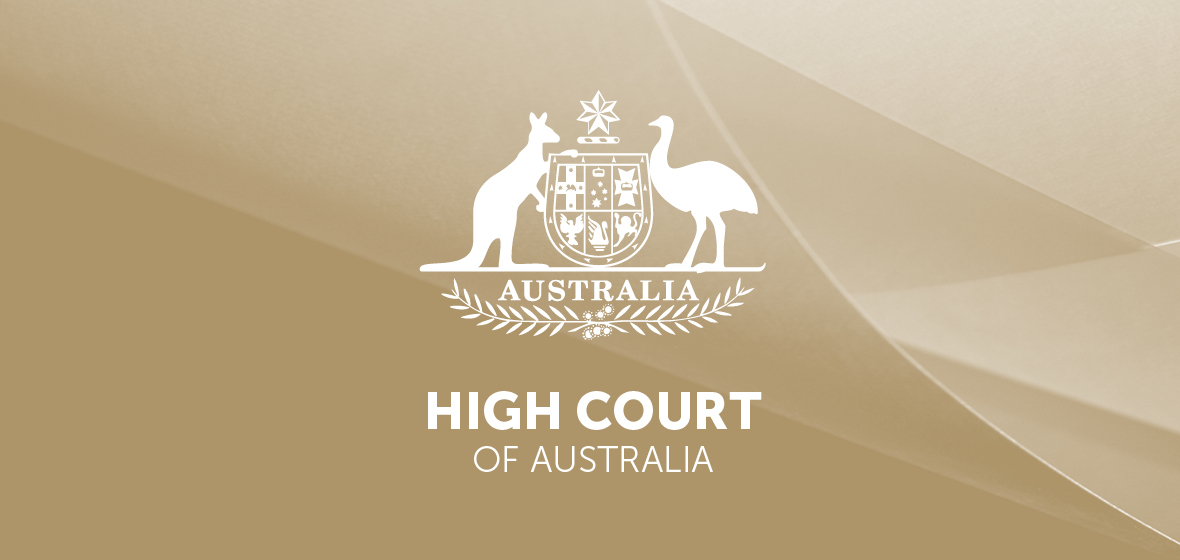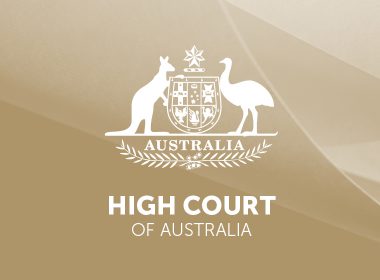Key decisions
- Lewis v Australian Capital Territory [2020] HCA 26
- Berry v CCL Secure Pty Ltd [2020] HCA 27
Tort of false imprisonment
Assessment of damages
In Lewis v Australian Capital Territory [2020] HCA 26 (5 August 2020) the High Court considered whether the appellant (‘Lewis’) was entitled to substantial, rather than merely nominal, damages to:
- vindicate his rights irrespective of whether he had suffered any loss; or
- compensate him in circumstances where he would have been held in custody in any event.
Lewis had been sentenced under the Crimes (Sentencing) Act 2005 (ACT) (‘Sentencing Act’) to 12 months’ imprisonment for recklessly or intentionally inflicting actual bodily harm on another by smashing a glass into a man’s face. The sentence was to be served by way of periodic detention on weekends.
After Lewis failed to attend for periodic detention on four occasions, the Sentence Advisory Board (‘Board’) notified Lewis of a Board inquiry into his non-attendance as required under the Sentencing Act. Lewis also failed to attend the Board inquiry and, in his absence, the Board cancelled Lewis’ periodic detention.
Relevantly, the Sentencing Act required the Board to, as soon as practicable, cancel an offender’s periodic detention, and place the offender in full-time custody, if the Board found that the offender had failed to perform periodic detention on two or more occasions. Lewis went on to successfully challenge the cancellation on the basis that the Board had denied him procedural fairness. Lewis was granted bail pending the challenge and, ultimately, was not required to serve his initial sentence of periodic detention.
Lewis subsequently sued the Australian Capital Territory for damages for false imprisonment for the 82 days he served in custody before being granted bail.
At first instance Lewis was awarded only nominal damages. The trial judge considered that Lewis had not suffered any loss because, by virtue of the provisions of the Sentencing Act, his periodic detention would have been cancelled in any event. The trial judge also refused an award for ‘vindicatory damages’ finding no entitlement to such a remedy.
Lewis unsuccessfully appealed to the Court of Appeal.
On appeal to the High Court, Lewis did not fare much better. The High Court unanimously dismissed Lewis’ appeal on both fronts. As Gordon J points out, Lewis, in his claim, had essentially conflated liability for the tort of false imprisonment with compensation. Gordon J notes that the tort is actionable per se and a person who is falsely imprisoned is entitled to a declaration and nominal damages to mark an infraction of his or her legal right. However, no substantial compensatory damages can be awarded where there is no actual loss to compensate.
The High Court unanimously found that substantial ‘vindicatory damages’ was not supported by authority or principle.
As Gordon J points out, [the appellant], in his claim, had essentially conflated liability for the tort of false imprisonment with compensation … The High Court unanimously found that substantial ‘vindicatory damages’ was not supported by authority or principle.
Trade practices
Assessing damages for misleading and deceptive conduct
In Berry v CCL Secure Pty Ltd [2020] HCA 27 (5 August 2020) the High Court considered how or when the evidentiary burden of proving loss or damage, under s 82 of the Trade Practices Act 1974 (‘TPA’), now s 236 of the Australian Consumer Law (‘ACL’), shifts from the claimant to the defendant.
The facts in Benvoy centre on an agency agreement between the parties. The respondent, formerly known as Securency Pty Ltd (‘Securency’), carried on a business printing polymer bank notes. Relevantly, Securency’s production of polymer bank notes involved a number of processes. One of those processes, known as ‘opacification’, involved the conversion of polymer film sheets into opacified polymer. Securency marketed its polymer bank notes to a number of countries, including the Federal Republic of Nigeria. Securency’s marketing efforts were initially unsuccessful in Nigeria until the first appellant, Dr Berry, offered his assistance. Dr Berry was an entrepreneur who held some influence with senior officials within the Nigerian government. Dr Berry promoted Securency’s polymer bank notes because he wanted to be commercially involved in the construction and operation of an opacification plant in Nigeria. Between 2004 and 2006 Dr Berry persuaded Nigerian government officials to adopt polymer notes on the condition that an opacification plant be built in Nigeria in which Dr Berry, among others, would have an interest. In early June 2006 Nigeria placed an order for opacified polymer for the Nigerian Mint. At about this time Securency, Dr Berry and the second appellant, GSC (a company controlled by Dr Berry), executed a written agency agreement, backdated to February 2006. Under the agency agreement Dr Berry and GSC would act as the sole agent of Securency in Nigeria and would be paid a commission of 15 per cent on the net invoiced sale value of opacified polymer sold to the Nigeria. The agency agreement further provided that its two-year term would be automatically renewed unless terminated. Under the agency agreement Securency could terminate the agreement in one of two ways: by giving Dr Berry and GSC 30 days written notice (30 days before or after the expiry date of the agency agreement) or by 60 days written notice (at any time).
In January 2008 Nigeria placed further orders with Securency for opacified polymer. Securency did not inform Dr Berry about these orders. Instead, Securency devised a covert plan to deprive Dr Berry and GSC of the large commissions to which they would have been entitled under the agency agreement. In a meeting in February 2008, Securency’s director, Mr Chapman, falsely told Dr Berry that the agency agreement had to be terminated before a partnership agreement, for the development of an opacification plant, could be put into place. Mr Chapman also falsely told Dr Berry that, until the partnership agreement was executed, the parties would adhere to the financial terms of the agency agreement. Dr Berry was presented with, and signed, a letter terminating the agency agreement as of 31 December 2017. No partnership agreement was ever produced and Dr Berry discovered Securency’s duplicity months later.


